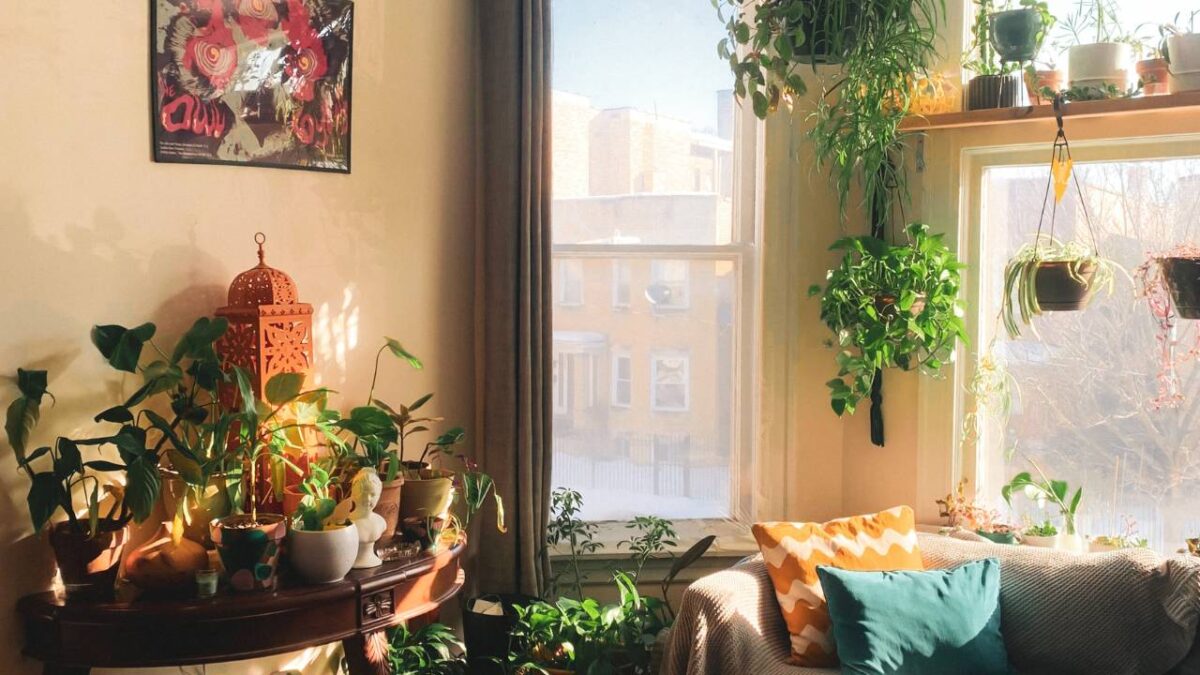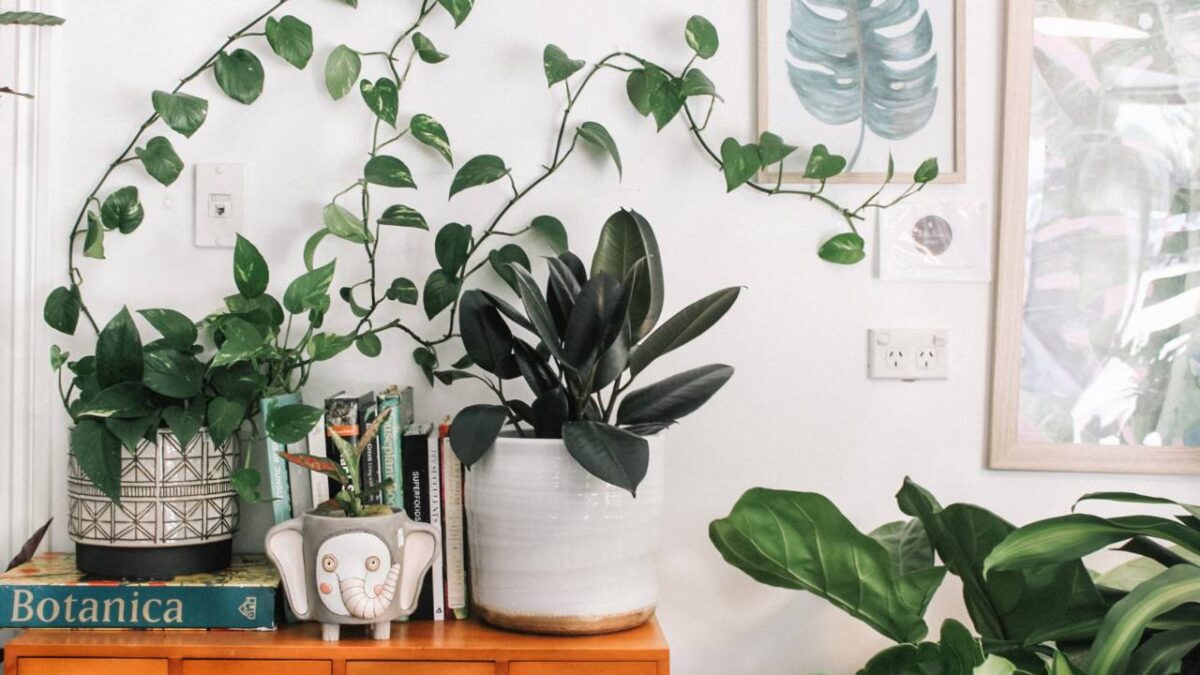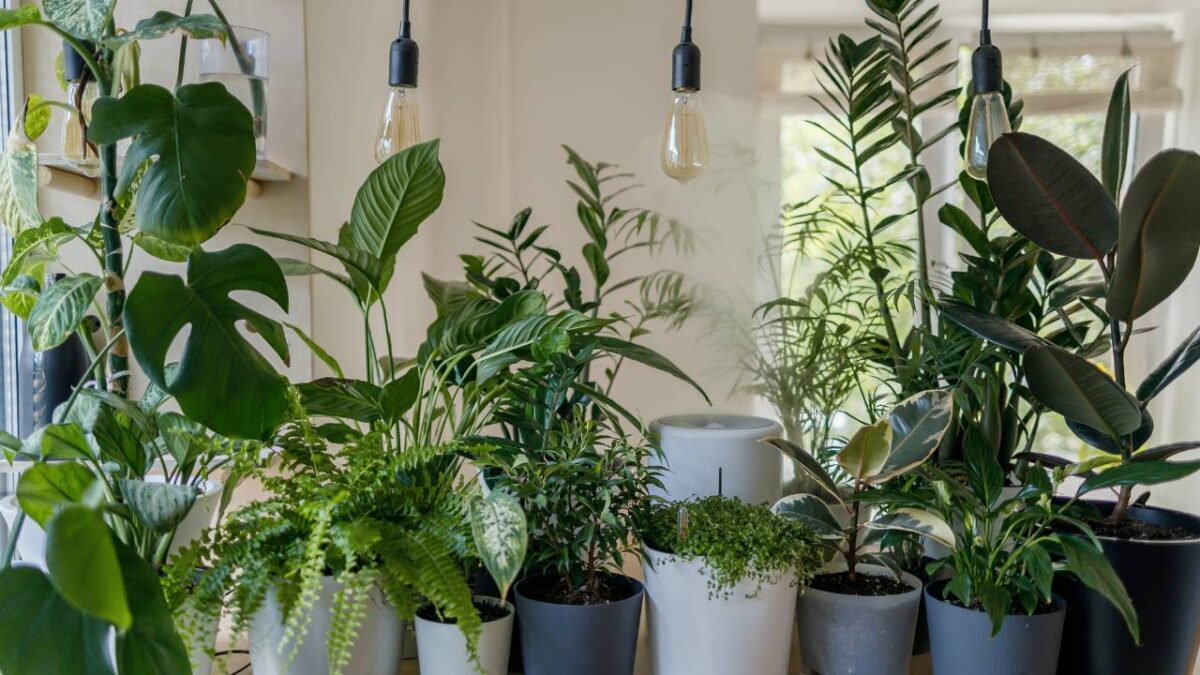In today’s fast-paced world, it’s essential to find ways to connect with nature and create a calming atmosphere within your living space. Incorporating natural elements into your home design can significantly improve your overall well-being and create a peaceful retreat where you can recharge after a long day. So, let’s explore some ideas for bringing the outdoors in and embracing the beauty of nature right in the comfort of your home.
Understanding Biophilic Design
Biophilic design is an approach that seeks to connect you with nature by incorporating natural elements into your home’s architecture and interior design. Being around nature is known to have positive effects on your well-being, and biophilic design aims to harness these benefits for your everyday life.
In order to create a biophilic environment, architects and designers often focus on incorporating natural materials, forms, and patterns into their projects. This could include using wood, stone, and plants for structural and decorative elements, as well as designing spaces with an emphasis on natural light and pleasing views of the outdoors.
Moreover, biophilic design is not just about adding a few potted plants or nature-inspired wallpaper to a room. It’s about creating a harmonious blend of nature and engineered structures in your home. This can be achieved through various design strategies, such as:
- Integrating greenery: Plants not only purify the air but also provide a calming, stress-reducing influence on you. Consider adding a living wall or building planters into your home’s design.
- Maximising natural light: Large windows, skylights, and glazed doors allow sunlight to stream into your living spaces, creating a bright and cheerful atmosphere.
- Using natural materials: Wooden floors, stone countertops and textured fabrics, all help to evoke a sense of nature within your interior design.
- Incorporating water features: The sound of running water has been known to have soothing effects on the human mind. Adding a small indoor water feature can create that feeling of tranquillity.
- Framing nature views: Whether you live by the sea or surrounded by greenery, designing your home in a way that maximises views of the natural surroundings is a critical aspect of biophilic design.
Health and Well-being Impacts
Incorporating nature into your home design can have a remarkable impact on your health and overall well-being. Bringing the outdoors in not only helps to create a soothing atmosphere but can also provide a multitude of benefits for both your physical and emotional well-being.
One of the most significant effects of incorporating nature into your living space is the improvement of air quality. By including plants in your home, you’re actively purifying the air, as plants absorb pollutants and release oxygen. This can lead to a reduction in common respiratory issues and even make you feel more energised throughout the day.
Nature can also play a crucial role in reducing stress levels. A home filled with plenty of natural elements, such as plants, sunlight and natural materials, creates a calming environment. This can help you to de-stress after a long day, promoting relaxation and improving your overall emotional well-being.
Moreover, being surrounded by elements of nature can also contribute to higher levels of comfort, productivity and creativity. A cosy, well-designed living space that incorporates natural elements can boost your mood, leading to enhanced productivity when attempting tasks and increased creativity when working on projects or hobbies.
Incorporating Natural Light and Colours

One of the best ways to bring nature into your home is by incorporating natural light and colours. Not only do these elements improve your mood, but they can also help you feel more connected to the outdoors.
Natural light plays a vital role in making your space feel more inviting. Large windows and glazing can help you maximise the sunlight that enters your home. Be mindful of the sun’s path throughout the day, and consider the rooms where you spend the most time. This will allow you to harness the sun’s energy and create an energising atmosphere.
Skylights are another great way to let in natural light, and they have the added benefit of offering a view of the sky, making your home feel more expansive. When planning your skylight, think about its size and location, as this can drastically impact the amount of light it lets in and the atmosphere it creates.
The lighting in your home should complement the natural light, which means using bulbs with a similar temperature to daylight. This will help create a cohesive and harmonious environment that feels connected to the outdoors.
Colours have a significant impact on the atmosphere in your home. To achieve a natural look and feel, opt for colours inspired by nature. Think of earthy tones like browns, greens, and beiges, as well as the blues of the sky and water. When choosing your colour palette, consider the source of your inspiration, such as a forest, a beach, or a garden, and aim to reflect those colours in your interior design.
To further enhance the natural vibe, bring in materials like wood, stone, and plants. They can work as accents throughout your space, adding touches of the outdoors and making your home feel more grounded and connected to nature.
Using Natural Materials in Furniture
Incorporating natural materials into your home design doesn’t just stop at decor; it extends to furniture selection as well. By choosing furniture made from materials found in nature, you can bring a sense of warmth and authenticity to your space while also creating a more sustainable and environment-friendly home.
Wood is a classic and versatile choice for furniture, as it comes in various types, such as oak, teak, pine, and mahogany. Each type of wood has its unique qualities, making it suitable for different purposes and styles. Consider investing in solid wood pieces, as they are durable and timeless.
Stone and clay can add a natural touch to your home through accents like a stone coffee table or clay pots for your plants. These materials are solid and can withstand wear and tear, making them perfect for use in high-traffic areas of your home. Additionally, their earthy tones can add warmth and texture to your space.
Bamboo, wicker, and rattan are lightweight and sustainable options for your furniture as they grow rapidly and require fewer resources to produce. Bamboo and rattan are perfect for creating an airy and tropical feel, while wicker can be used for items like chairs or wicker baskets to add a cosy and rustic charm.
Cork is another excellent natural material choice for your furniture. Its unique texture and insulating properties make it a great option for flooring or even a side table. As an added benefit, cork is eco-friendly as it’s harvested without damaging the tree it comes from.
Last but not least, consider using wool for soft furnishings like cushions, upholstery, or rugs. Wool is a renewable resource that is biodegradable and offers natural insulation to keep you warm in colder months.
Integrating Plants and Greens

Incorporating nature into your home design is a wonderful way to create a calming and inviting atmosphere. One popular method to do this is by integrating plants and greens throughout your living space. By bringing in indoor plants and greenery, you’re not only adding visual interest but also improving the air quality and promoting a sense of relaxation.
Potted plants are a versatile way to introduce greenery to your home. Choose from a variety of options, such as herbs, flowers, succulents, and cacti. Place them on shelves, tables, or window sills to create a focal point or to break up an otherwise flat surface. Trailing plants, in particular, can add movement and texture when draped over cabinets or hanging from the ceiling.
A more innovative approach is creating a living wall or green wall. This unique design element incorporates an array of plants vertically on a wall, adding depth and colour to your space. It can be as simple or as complex as you like, ranging from a few strategically placed hanging pots to a fully integrated vertical garden.
Herbs are not only wonderful for their fragrance and culinary uses, but they also make attractive additions to your indoor greenery collection. Plant them in small pots and place them on your kitchen windowsill or countertop for easy access whilst cooking. Some popular choices include basil, parsley, and mint.
Flowering plants can add a burst of colour to your interiors and often have delightful scents that can enhance the atmosphere of your home. Some beautiful and low-maintenance options are peace lilies, African violets, and orchids. These plants can thrive in filtered light and do not demand too much attention.
Succulents and cacti are perfect for those who might not have a green thumb, as they require minimal care. These plants come in a variety of shapes and sizes, making them interesting additions to your green collection. Place them on windowsills or adorn your shelves with an interesting assortment.
Creating a Sense of Outdoors with Water Features
As you think about incorporating nature into your home design, consider adding water features to create a sense of the outdoors inside your home. Water features have a soothing effect on our psyche and can instantly change the atmosphere of a room, making it feel more relaxing and inviting.
One fantastic idea to bring the outdoors in is with indoor ponds or aquariums, which can be as simple or elaborate as you wish. You can position these water features near windows or use them as room dividers, enjoying the calming sight and sound of water and the vibrant colours of aquatic life.
A tabletop water fountain is a more straightforward option for those with limited space or who want to keep it low-key. These fountains come in various designs and are perfect for placing on a side table, desk or shelf to get that subtle touch of nature.
Weather plays a crucial role in our experience of the outdoors, including the moving water in streams and rivers. Choosing wall-mounted water features can give you a feel of these natural settings as they mimic the water flow. You can opt for a small water wall or a floor-to-ceiling feature.
Involve your senses further by including weather-related design elements—incorporate rocks, natural wood, and plants in your water feature setup to give it a more genuine outdoor feel. These elements complement the water and provide a sense of balance, giving your space a unique and cohesive look.
Expanding Living Space with Outdoor Views

Incorporating nature into your home design is an excellent way to bring the outdoors in and create a more harmonious living environment. Here are some ideas on how to take advantage of those gorgeous views and maximise your connection to the outside.
One of the most popular ways to create a seamless transition between indoor and outdoor spaces is by installing large patio doors. These doors not only let in an abundance of natural light but also provide stunning, uninterrupted views of your garden or surrounding scenery. They come in various styles, such as sliding, bi-fold or French doors, allowing you to choose the perfect design for your home.
In addition to patio doors, you could consider incorporating a roof lantern into your living space. Roof lanterns add a touch of elegance to any room and draw the eye upwards, creating an open and airy atmosphere. As a bonus, they allow natural light to flood the room during the day while providing a view of the stars at night. This creates an intimate, enchanting ambience that will leave you feeling closer to nature.
Another option is to strategically place large windows or floor-to-ceiling glass panels in areas where you spend most of your time. This could include your living room, bedroom, or even your kitchen. By positioning these windows to face a picturesque view, you’ll be able to enjoy the serenity of nature while carrying out your daily activities.
Decor Ideas for Bringing Nature Indoors
Incorporating nature into your home design is a wonderful way to create a relaxing space that brings the beauty of the outdoors inside. Here are some friendly ideas to help you bring natural elements into your home.
- Utilise Branches and Wooden Elements: You can use fallen tree branches, twigs, and even driftwood as décor items that add an organic touch to your space. Clean them up, place them in vases, or even use them to create unique wall art. Wooden furniture and hardwood floors are great ways to introduce warmth and nature into your home.
- Decorate with Seashells and Rocks: If you love spending time at the beach or just love the natural beauty of seashells and rocks, bring them into your home as decorative objects. Arrange them on shelves, tables or in bowls, creating interesting displays that showcase their natural patterns and textures.
- Incorporate Paintings and Photography: Artwork inspired by nature is a fabulous way to transport the outdoors into your living space. Hang beautiful paintings or nature photography on the walls or display them on shelves and side tables. These pieces can serve as stunning focal points and remind you of your favourite outdoor places.
- Greenery and Houseplants: Adding lush greenery to your home instantly connects you with nature. Houseplants come in many various shapes, sizes, and levels of care. They offer an array of benefits, such as improving air quality, mitigating stress, and enhancing the overall appearance of your space.
- Pets and Fish Tanks: Another way to bring a piece of the natural world inside is by having a beloved pet or a fish tank in your home. Fish tanks, with their calming, flowing water, are not only great for relaxation but can also be visually engaging. In addition, a cute and cuddly pet, like a cat or dog, can provide companionship and a daily connection to nature.
Challenges in Bringing Outdoors In and Overcoming Them
As you endeavour to incorporate nature into your home design, you might face some challenges. But don’t worry – we’ve got your back with some friendly advice to help you overcome them.
One challenge you may face is limited space. If you live in a smaller home or flat, you might find it difficult to incorporate larger plants, trees, or other natural elements. However, there are many compact plants and vertical gardening solutions that may be a great fit for your space. Consider hanging plants and wall-mounted planters to bring life to tight spaces without compromising your living area.
Another challenge is finding the right balance between incorporating natural elements and maintaining a cohesive design. This is important if you want to create a calming space that doesn’t look cluttered or disjointed. When selecting plants and other natural materials, choose colours and textures that complement your home’s existing design. A consistent colour palette and an intentional layout will help your space feel organic and well-balanced.
Lighting can be another challenge when trying to integrate nature into your home design. Some plants require higher levels of light, while others thrive in shaded areas. Assess your home’s natural light and select plants that match the lighting conditions of individual rooms. Additionally, artificial lighting or innovative window treatments can help you regulate the amount of light your indoor garden receives.
Lastly, maintenance requirements may pose a challenge. For those with busy lifestyles, it’s important to choose low-maintenance plants that can still provide the desired aesthetic. Succulents, air plants, and snake plants are examples of low-maintenance options that can add a touch of nature to your home without requiring constant attention.
Conclusion
Incorporating nature into your home design is more than a trend – it’s a transformative journey toward well-being and tranquillity.
Embracing biophilic design principles, maximising natural light, and integrating the soothing presence of plants and water features can elevate your living space into a haven of calm. As you surround yourself with the beauty of the outdoors within your home, you not only enhance the aesthetic appeal but also reap the numerous health benefits.
So, embark on this nature-inspired design adventure, and let your home become a sanctuary where the lines between indoor comfort and the serenity of the outdoors blur seamlessly.






